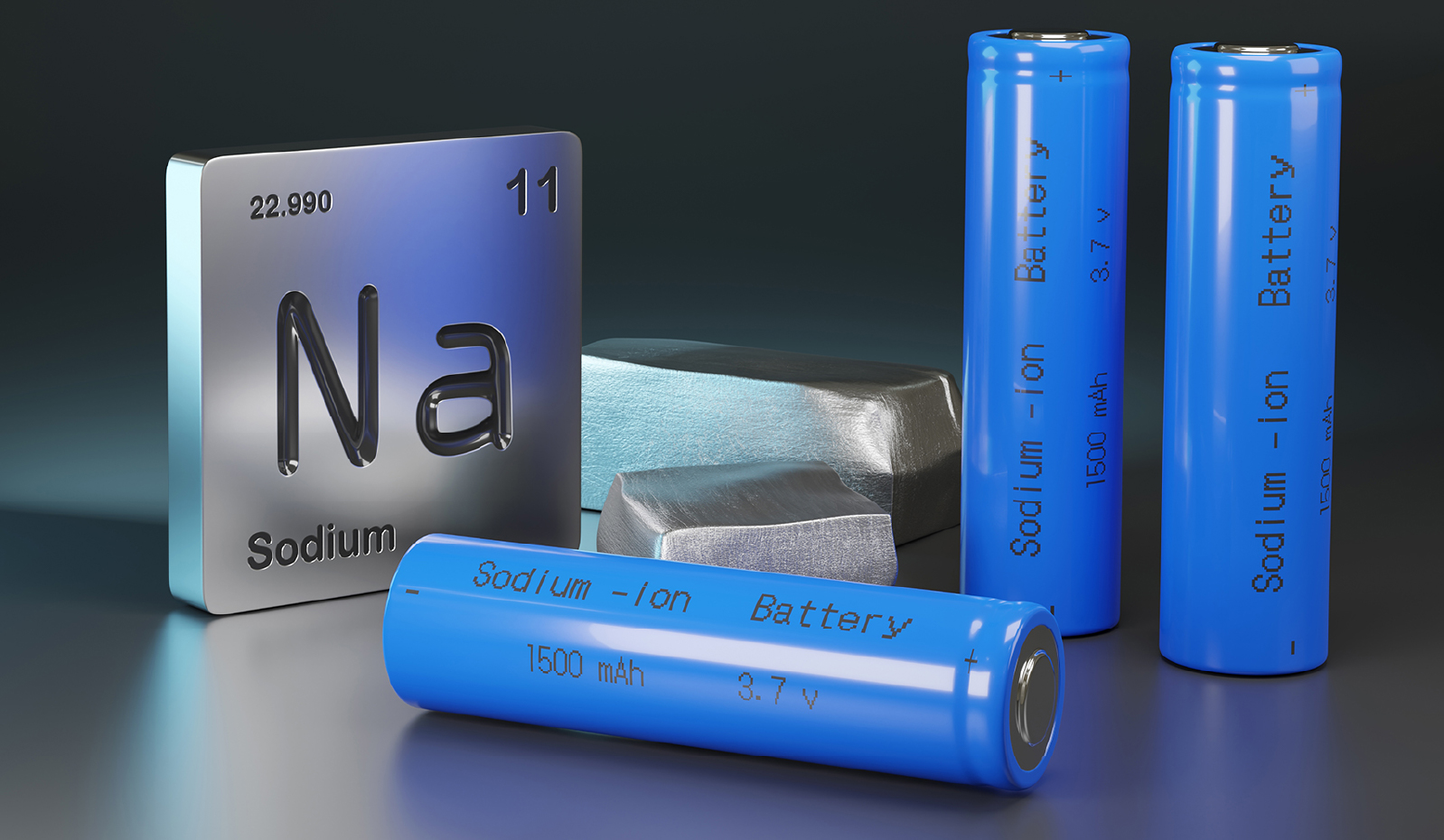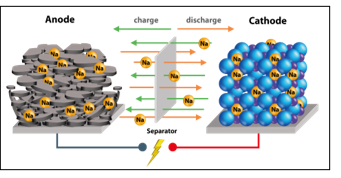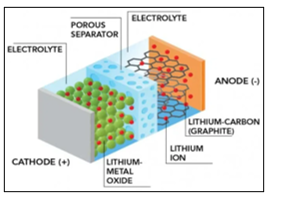- Courses
- GS Full Course 1 Year
- GS Full Course 2 Year
- GS Full Course 3 Year
- GS Full Course Till Selection
- MEP (Mains Enrichment Programme) Data, Facts
- Essay Target – 150+ Marks
- Online Program
- GS Recorded Course
- NCERT- First Ladder
- Polity
- Geography
- Economy
- Ancient, Medieval and Art & Culture AMAC
- Modern India, Post Independence & World History
- Environment
- Governance
- Science & Technology
- International Relations and Internal Security
- Disaster Management
- Ethics
- Current Affairs
- Indian Society and Social Issue
- CSAT
- 5 LAYERED ARJUNA Mentorship
- Public Administration Optional
- ABOUT US
- OUR TOPPERS
- TEST SERIES
- FREE STUDY MATERIAL
- VIDEOS
- CONTACT US
India’s Scientists design fast-charging & long-lasting sodium-ion battery
India’s Scientists design fast-charging & long-lasting sodium-ion battery

Relevance: GS III; Science and Technology;
Why in the News?
A research team at the Jawaharlal Nehru Centre for Advanced Scientific Research (JNCASR), an autonomous institute of the Department of Science and Technology (DST) has developed a super-fast charging Sodium-ion Battery (SIB).
- It is based on a NASICON-type cathode and anode material.
- It can charge up to 80% in just six minutes and last over 3000 charge cycles (that’s years of daily use!).
What is a Sodium-ion Battery (SIB)?
- A Sodium-ion Battery (SIB) is a type of rechargeable battery that works much like a lithium-ion battery, but uses sodium ions (Na⁺) to carry electrical charge instead of lithium ions (Li⁺).
- It is made up of a cathode (positive electrode), an anode (negative electrode), a liquid electrolyte containing sodium salts, and a separator.
- When the battery charges, sodium ions move from the cathode to the anode through the electrolyte, while electrons flow through the external circuit.
What is a Lithium-ion Battery? (LIB) 
- A lithium-ion battery is a type of rechargeable battery widely used in devices like smartphones, laptops, and electric vehicles because of its high energy density, light weight, and ability to be recharged many times.
- It consists of an anode (negative electrode), cathode (positive electrode), separator, electrolyte, and current collectors.
- When charging, lithium ions move from the cathode to the anode through the electrolyte, while electrons flow through an external circuit to the anode. This stores energy in the battery.
How is Sodium-Ion Battery more efficient from the previous Lithium-Ion Battery?
|
Parameter |
Lithium-Ion Battery |
Sodium-Ion Battery |
|
Raw Material Abundance |
Scarce (0.0017% of Earth's crust); higher material cost |
Abundant (2.6% of Earth's crust); lower material cost |
|
Energy Density |
Higher (100–300 Wh/kg); lighter for same capacity |
Lower (100–160 Wh/kg); heavier for same capacity |
|
Nominal Voltage and Performance |
3.2–3.7 V per cell. Performance can degrade in low temperatures |
2.3–2.5 V per cell. Better performance at low temperatures |
|
Charging Speed and Safety |
Slower. Can overheat or catch fire if not managed properly |
Faster. Lower risk of overheating/thermal runaway |
|
Cost |
Higher ($70/kWh); lithium and copper are expensive |
Lower ($50/kWh); sodium and aluminum are cheaper |
|
Environmental Impact |
Higher; lithium mining and processing are less eco-friendly |
Lower; sodium extraction is less harmful, easier to recycle. |
|
Application Suitability |
Best for portable electronics, EVs, where high energy density is critical |
Best for stationary storage, grid, cost-sensitive, and cold-weather applications |
Why is this research so significant for the World and India?
- Cost: Most of today’s batteries, from smartphones to electric cars, use lithium-ion technology.
- Lithium works well, but it’s expensive, not very abundant, and mostly imported in countries like India.
- Resource Availability and Adaptability: Sodium, on the other hand, is cheap and plentiful like the salt in seawater!
- But until now, sodium-ion batteries had a big problem: they charged slowly and didn’t last as long as lithium ones. The new development from Indian scientists changes all that.
- India can reduce its imports and achieve self-reliance in the battery industry.
- It also promises greater energy storage capacity that can be used in logistic and agri-allied sectors to prevent losses in value chains.
- Clean Energy for Everyone: These batteries could power electric vehicles, solar energy storage, drones, and even rural homes—making clean energy more affordable and widespread.
Way Forward: The new battery has been tested using advanced scientific methods and computer simulations. It’s a big leap forward, but it’s not ready for store shelves yet. More development and scaling up are needed before these batteries can be used in everyday products.




